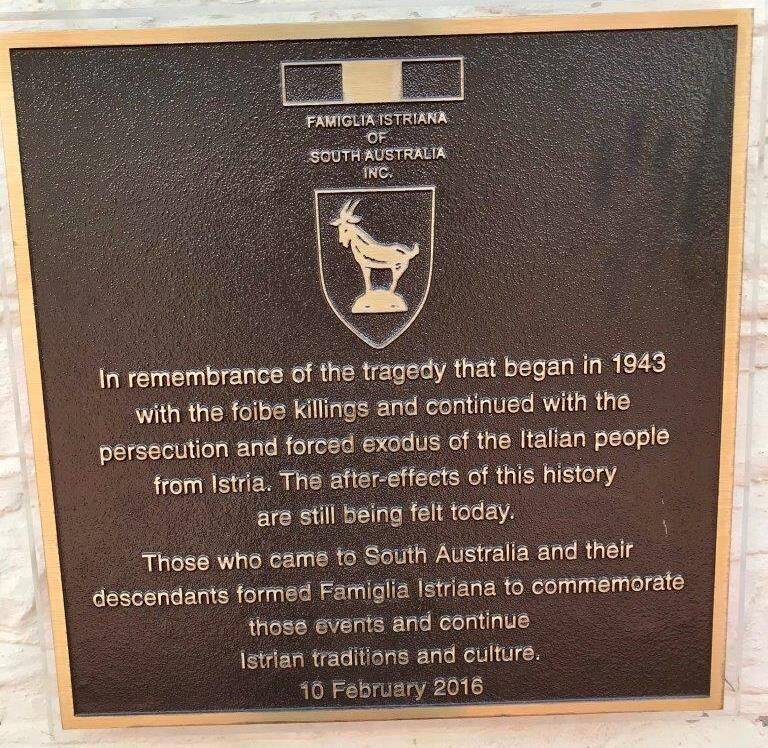
Home » Themes » Government » Oppression
Famiglia Istriana MemorialPrint Page 

The plaque commemorates the Italian people from the Istria Peninsula in Croatia who were killed, persecuted and oppressed by Communist regimes during and after World War Two.
Between 1943 and 1947, especially towards the end of World War Two and also after its end, some 15,000 Italians living in the Istrian peninsula were killed by General Tito’s communists and dropped into the “foibe.” Geologically, “foibe” are narrow mountain gorges, typical of the Friuli Venezia Giulia and Istrian Peninsula.
The massacre was due partly in retaliation for Italian occupation of the peninsula during World War Two. The Istrian peninsula has always been a disputed territory between Italy and Yugoslavia, and during World War Two. Horrible acts were committed on both sides.
Istria had been Italian for large parts of its history, as part of the Venetian Republic first, and of the Kingdom of Italy after (it eventually became part of the newly born state of Yugoslavia only during the years the events we are about to tell took place). The Istrian-Italian community had been thriving for centuries and was still very much preponderant during the years of the war.
The first wave of anti-Italian violence began after the Armistice of the 8th of September 1943, signed by Badoglio and the Allied Forces in Cassibile. Slavic communist partisans sought vengeance against those Italians who were not politically aligned with them. This included Fascist supporters, but also a large amount of people who had no open political affiliation. In this occasion, at least 1000 Italians were tortured, starved, killed and thrown in the foibe.
Violence escalated in 1945, when Tito’s troups occupied Istria, as well as Trieste and Gorizia. Italians were again victims of communist violence, especially the Fascists, the Catholics, churchmen, children, and the elderly. Some victims were killed and thrown into the deep gorges, others were tossed in alive.
Persecutions continued until the Spring of 1947, when the border between Italy and Yugoslavia was finally decided, and both Istria and Dalmatia became officially Yugoslavian. Italians of Istria faced another trauma: more than 350.000 Italians were forced to leave their homes and flee to Italy. Once here, they were not welcomed as the country, on its knees after the war, accepted with difficulty the new comers. The newly born democratic Italian government did not help them either.
These Italian refugees, looking for hospitality and security in their own country, were despised by Italian communists, supporters of the Yugoslavian regime, and very much ignored by the rest of Italy’s political panorama.
Location
| Address: | 82 Kintore Avenue, Memorial Wall, Migration Museum, Adelaide, 5000 |
|---|---|
| State: | SA |
| Area: | Foreign |
| GPS Coordinates: | Lat: -34.919781 Long: 138.601777 Note: GPS Coordinates are approximate. |
Details
| Monument Type: | Plaque |
|---|---|
| Monument Theme: | Government |
| Sub-Theme: | Oppression |
| Approx. Event Start Date: | 1943 |
| Approx. Event End Date: | 1947 |
Dedication
| Actual Monument Dedication Date: | Wednesday 10th February, 2016 |
|---|
Famiglia Istriana of South Australia Inc.
In remembrance of the tragedy that began in 1943 with the foibe killings and continued with the persecution and forced exodus of the Italian people from Istria.
The after-effects of this history are still being felt today.
Those who came to South Australia and their descendants formed Famiglia Istriana to commemorate those events and continue Istrian traditions and culture.
10 February 2016



